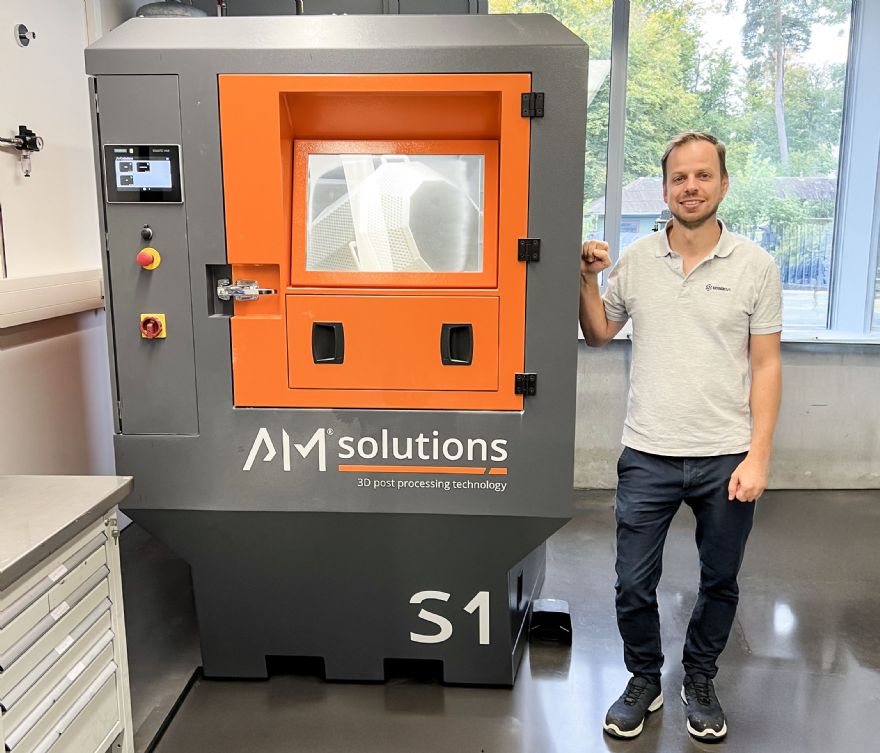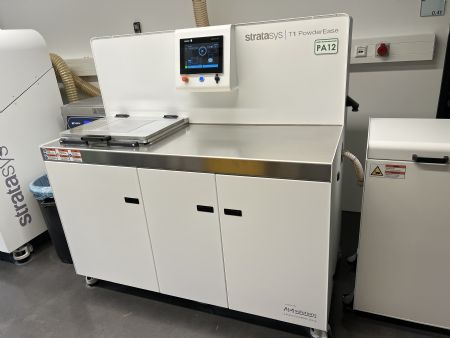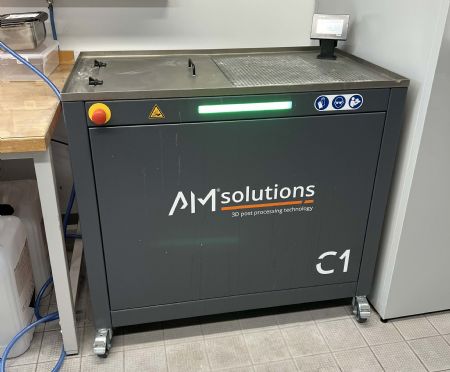 Stratasys
Stratasys, a global leader in additive manufacturing (AM) systems, has taken a significant step in refining its post-processing capabilities by integrating an S1 system from
AM Solutions – 3D post processing technology, a brand of the
Rösler Group, into its Additive Manufacturing Centre in Rheinmünster.
This advanced solution has enabled the company to enhance the surface quality of parts produced using its SAF (selective absorption fusion) process, delivering uniform and reproducible results. The S1 introduces a combined cleaning and surface finishing operation in a single machine, using one media, which streamlines workflow, reduces space requirements, and lowers operational costs.
At the heart of Stratasys’ operations in Rheinmünster, post-processing is a critical component. The facility serves a wide range of industries across the EMEA region, including automotive, medical, aerospace, and defence. Whether producing prototypes, tooling components, or end-use parts for customer samples, exhibitions, or contingency needs, the company views post-processing as essential to establishing AM as a true industrial production method.
Reproducible qualityDennis Kronimus, Additive Manufacturing Centre manager at Stratasys EMEA, said: “While the 3-D printing process itself is already highly automated, many post-processing steps remain time-consuming and partially manual. Automated solutions make it possible to standardise these processes, reduce lead times, and ensure consistently high, reproducible quality.”

The SAF process is Stratasys’ powder-based AM technology designed for industrial-scale polymer part production. It enables the creation of large batches of components with excellent mechanical properties, but achieving consistent surface quality requires an efficient post-processing process. Previously, Stratasys relied on an automated cleaning system using glass beads, which lacked surface finishing capabilities.
As quality demands increased, the limitations of this approach became apparent. The decision to adopt the S1 was driven by its ability to deliver superior surface finishes and its positive impact on downstream processes such as dyeing. The system’s thoughtful design also simplifies maintenance and daily operation.
Mr Kronimus continued: “Thanks to the S1, we can now perform cleaning and surface finishing in a single cycle using just one media – previously we needed two separate systems for this. As a result, we have significantly increased the efficiency of our SAF post-processing, achieving a 25% time savings along with better surface finishes. Furthermore, the system requires considerably less floor space — an important factor in our technology centre, which houses numerous machines.”
Consistent performanceThe switch from glass beads to polybeads has further improved surface quality. These polybeads are more durable and deliver a superior finish, with their longevity enhanced by the S1’s sophisticated media conditioning system. Filters, cyclones, and media screens work in harmony to reliably separate blasting media from powder, ensuring consistent performance.
Stratasys’ collaboration with AM Solutions extends beyond the S1. At the Rheinmünster site, the company also employs the PowderEase T1 (pictured above), a system co-developed specifically for the H350 SAF printer and manufactured at AM Solutions’ Untermerzbach facility. This solution automates unpacking, powder recovery, and dosing for up to six printers, reducing manual labor while improving operator safety and powder efficiency—offering both economic and environmental benefits.

The company also uses the C1 system (pictured right) from AM Solutions for the automated removal of support material from 3-D printed parts produced using PolyJet and industrial FDM processes. According to Stratasys, the system improves workplace safety and reduces the frequency of fluid replacement thanks to continuous sieving. Coarse support structures can be removed from the bath without being dissolved, simplifying the process further.
Stratasys’ decision to partner with AM Solutions was influenced not only by the product portfolio but also by the company’s decades of experience in surface finishing, supported by the Rösler Group. The ability to test parts on-site and receive immediate feedback was a key advantage, along with fast response times and a collaborative working relationship.
Commenting on the growing partnership, David Soldan, head of AM Solutions – 3D post processing technology, concluded: “We are very pleased that our successful collaboration with Stratasys – which began with the development and implementation of the PowderEase T1 and the adoption of the C1 – has now been further strengthened with the integration of the S1. For us, this is a strong sign of mutual trust and proof that two companies with the highest quality standards can together achieve real progress in industrial additive manufacturing.”